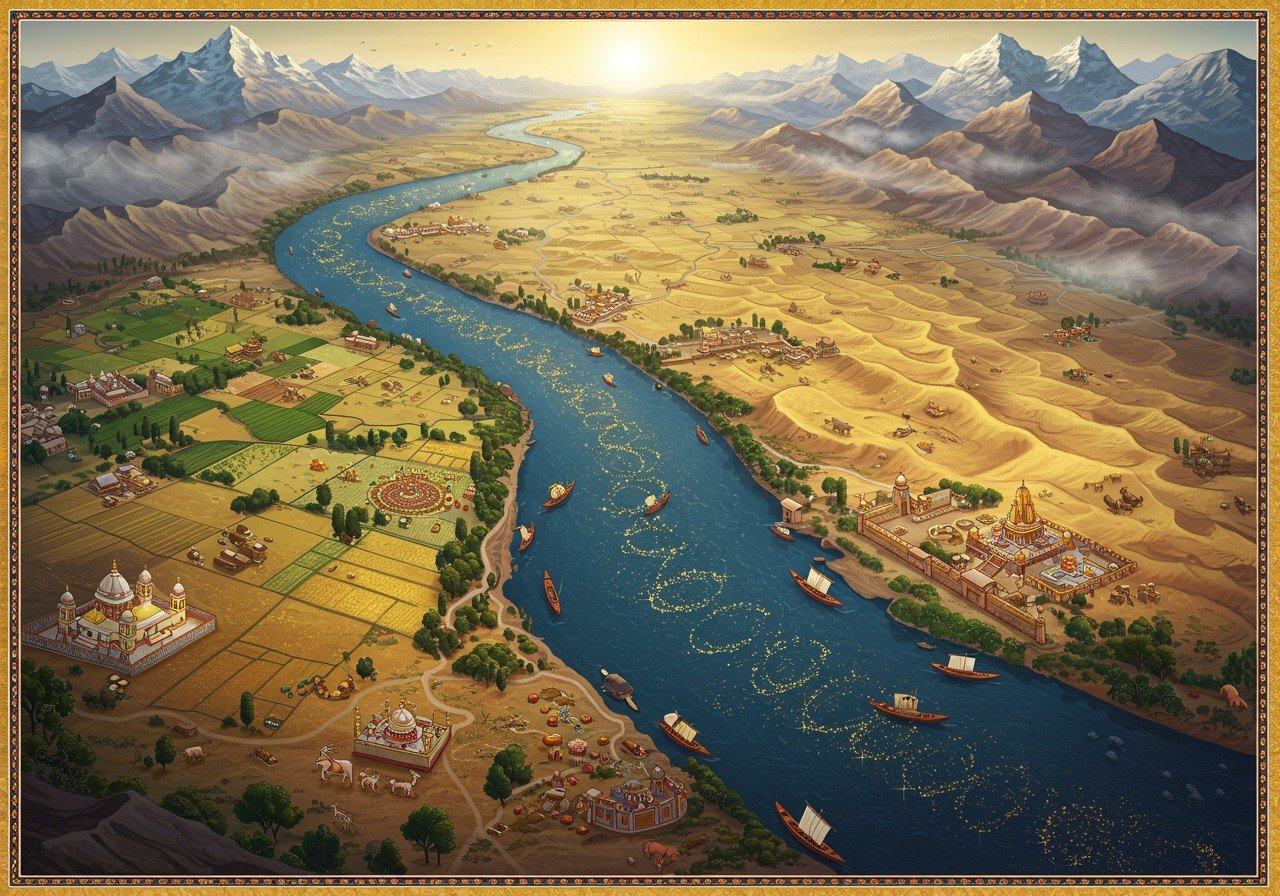
Embark on a journey through the geography of the Indus River Basin, an area of immense historical significance and contemporary importance. Understand the geographical features that make this basin unique and explore the pivotal role it played in the development of the Indus River Valley Civilization (2500-1700 BCE). Gain insights into its modern-day relevance, particularly in India, and discover why this region remains a cornerstone of cultural and economic activity.
Overview of the Indus River Basin
The Indus River Basin is a vast area covering approximately 1.1 million square kilometers. It includes major rivers like the Indus, Jhelum, Chenab, Ravi, Beas, and Sutlej. This basin stretches across India, Pakistan, China, and Afghanistan. The climatic conditions vary from arid and semi-arid to temperate and alpine.
The basin is significant for its water resources, agriculture, and population density. Major cities such as Lahore, Karachi, and Amritsar are located within this basin. Geographers and historians have studied this area extensively due to its rich history and importance.
Indus River Basin Map
A map of the Indus River Basin illustrates the courses of the rivers, their tributaries, and the locations of major cities. It highlights topographical variations, ranging from high-altitude regions in the north to the plains in the south. The map also demarcates the political boundaries among India, Pakistan, and China.
Significant irrigation networks and dams, such as the Bhakra Dam and Tarbela Dam, are integral parts of this basin. The map is essential for planning and managing water resources. It helps in understanding the impact of these resources on regional agriculture and industry.
Historical Significance
The Indus River Basin is the cradle of the Indus Valley Civilization (2500-1700 BCE), one of the world’s earliest urban cultures. Major archaeological sites like Harappa, Mohenjo-daro, and Dholavira are located within this region. Known for their advanced urban planning, architecture, metallurgy and social organization, these cities stand as testaments to the ingenuity of this ancient civilization.
The basin played a crucial role in trade and cultural exchange in ancient South Asia. Although the civilization eventually declined, its legacy profoundly influenced subsequent cultures in the region. The historical identity of modern-day India and Pakistan is deeply connected to this basin.
Indus River Basin in India
Within India, the Indus River Basin encompasses states like Jammu and Kashmir, Himachal Pradesh, Punjab, Haryana, and Rajasthan. The river supports agriculture, especially in Punjab and Haryana, known as the “Granary of India”.
The Indus Waters Treaty between India and Pakistan governs the management of shared water resources. Key irrigation projects, such as the Indira Gandhi Canal, are vital for this region. However, challenges like water scarcity and pollution persist.
Ecological and Environmental Aspects
The Indus River Basin boasts diverse ecosystems. From alpine forests in the north to arid deserts in the south, it hosts unique flora and fauna. Endangered species like the Indus River dolphin call this basin home.
Environmental challenges, including deforestation, habitat loss, and pollution, pose a threat to these delicate ecosystems. Climate change impacts water resources and agricultural productivity. Efforts to conserve and restore these ecosystems include afforestation projects and wildlife conservation programs. Local communities utilize traditional knowledge for sustainable environmental management. Successful initiatives demonstrate positive outcomes for both the environment and the people.
Poojn.in: Connecting You to the Sacred Indus
Poojn.in, India’s leading spiritual and cultural goods store, recognizes the profound significance of the Indus River. We offer a wide selection of products to support your personal connection to this sacred waterway. Enhance your spiritual practices with our curated collection:
- Lord Shiva Murtis: Honor the divine connection between Lord Shiva and the holy rivers with beautifully crafted murtis. Available in various sizes and materials, these murtis serve as a focal point for your prayers and meditation.
- Mangalam Camphor: Create a pure and sacred atmosphere for your rituals with high-quality Mangalam camphor. Used in aarti and other ceremonies, camphor symbolizes purification and devotion.
- Learn about Sacred Rivers: Deepen your understanding of the cultural and spiritual importance of rivers in India by exploring our informative blog posts. We offer insights into the significance of river confluences (Sangams) and their role in Hindu traditions.
Conclusion
The Indus River Basin is more than just a geographical area; it is a lifeline supporting millions. Its rivers and tributaries nourish the land, fostering fertile grounds for life to thrive. The basin’s historical significance is immense, serving as the cradle of the ancient Indus Valley Civilization (2500-1700 BCE). Today, it continues to be vital for agriculture, water resources, and cultural heritage.
Understanding the Indus River Basin helps us appreciate its role in our daily lives and its contribution to our history. Despite modern challenges like water scarcity and pollution, efforts to preserve and sustain this basin are crucial. By valuing tradition and embracing innovation, we can ensure the Indus River Basin remains a source of life and prosperity for generations to come.


